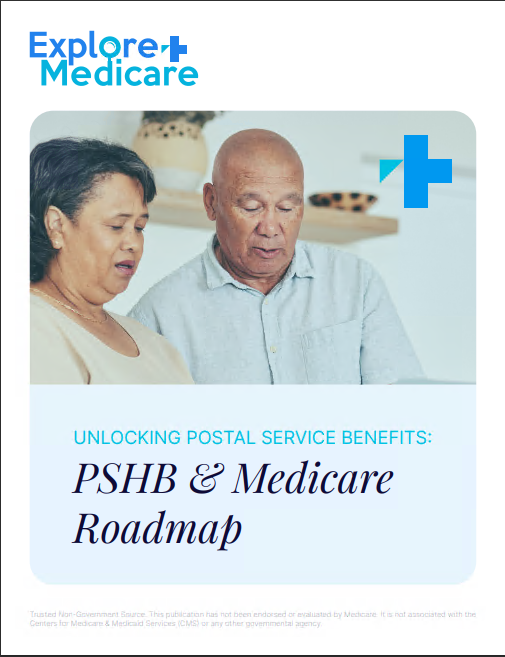Key Takeaways
-
Medigap plan availability is shrinking in 2025, especially for newer enrollees, due to ongoing regulatory changes and insurer participation trends.
-
Your ability to switch or enroll in a Medigap plan may depend on your state, age, and health history—making it essential to evaluate options carefully and early.
Why Medigap Plan Availability Is Narrowing in 2025
In 2025, the number of Medigap (Medicare Supplement Insurance) plans available to new enrollees is continuing to decline. Several insurers have exited the market, and certain plans are no longer offered to people who become eligible for Medicare this year. This shrinking landscape is influenced by rising healthcare costs, stricter underwriting standards, and a changing Medicare environment that emphasizes other forms of coverage.
If you’re turning 65 in 2025 or recently enrolled in Medicare, you may notice fewer Medigap options compared to previous years. Plans like C and F, for example, are no longer available to those who became eligible for Medicare after January 1, 2020. While older beneficiaries can keep these plans, new applicants must choose from a narrower set.
What Medigap Still Covers in 2025
Despite fewer choices, Medigap remains a solid option for covering some of the gaps Original Medicare leaves behind, including:
-
Part A coinsurance and hospital costs after Medicare benefits are used up
-
Part B coinsurance or copayments
-
The first three pints of blood
-
Part A hospice care coinsurance or copayment
-
Skilled nursing facility care coinsurance (for some plans)
-
Part A deductible (for some plans)
What’s covered depends on the specific Medigap plan you choose. The ten standardized Medigap plans (A, B, D, G, K, L, M, and N) remain consistent in benefits but differ in how much they pay.
The Most Popular Plans in 2025
For new enrollees in 2025, Plan G continues to be the most popular choice. It covers nearly everything that Plan F used to cover, except the Part B deductible. Plan N is another strong contender with lower premiums but requires some cost-sharing.
Plans K and L offer lower premiums but come with higher out-of-pocket costs. These may appeal to healthier individuals who don’t anticipate frequent medical needs but want protection from large expenses.
How Enrollment Works in 2025
When you first become eligible for Medicare and enroll in Part B, you get a six-month Medigap Open Enrollment Period. During this time:
-
You can enroll in any Medigap plan available in your area.
-
Insurers cannot deny you coverage or charge more based on your health.
After this period, your options may become limited. In most states, insurers can impose medical underwriting, which could result in higher premiums or denial of coverage based on your health history. That’s why it’s critical to act during your open enrollment window.
Some states have additional protections, such as birthday rules or continuous open enrollment policies. Make sure to check your state’s specific guidelines.
What to Look for When Comparing Medigap Plans
As Medigap options narrow in 2025, comparing plans becomes more important than ever. Here are key factors to evaluate:
1. Coverage
Ensure the plan covers the benefits that matter most to you. Plan G may be ideal for those wanting near-complete coverage, while Plan N may suit those who are comfortable paying copays.
2. Costs
Plans vary by premium, deductible, coinsurance, and copays. Consider both the monthly cost and your potential annual expenses.
3. Insurance Company Reputation
Even though plan benefits are standardized, customer service, rate stability, and claims handling can vary by insurer.
4. Household Discounts
Some insurers offer discounts if more than one person in the household has a policy, which can lead to long-term savings.
5. Future Rate Increases
Look at the plan’s premium history. Some carriers have a pattern of steep annual increases.
Common Mistakes to Avoid in 2025
With fewer Medigap options available, here are common pitfalls you should steer clear of:
-
Waiting too long: Delaying beyond your Medigap Open Enrollment Period could mean higher costs or denial based on health.
-
Focusing only on premiums: The cheapest plan isn’t always the best. Consider your overall out-of-pocket expenses.
-
Not checking provider access: While Medigap plans generally let you see any provider that accepts Medicare, verify that your preferred doctors do.
-
Overlooking state-specific rules: Some states offer more flexible switching rules. Missing out on those can limit your choices.
How Plan Availability Differs by State
Medigap rules and plan availability differ across states. In 2025, some states offer:
-
Community-rated pricing, where everyone pays the same regardless of age
-
Guaranteed issue rights beyond the initial enrollment window
-
Alternative enrollment periods, such as during your birthday month
States like California, Oregon, and New York are known for more consumer-friendly Medigap policies. If you live in or are moving to a different state, review that state’s specific rules.
Switching Medigap Plans in 2025
If you already have a Medigap plan and are thinking about switching, the process in 2025 is still tricky in most states. Outside your open enrollment or guaranteed issue window, insurers can:
-
Require medical underwriting
-
Deny coverage based on health conditions
-
Charge higher premiums
Only a few states make switching easier. Be sure you understand your rights before dropping any existing plan.
Medigap and Medicare Advantage: Different Paths
You cannot have both a Medigap policy and a Medicare Advantage plan at the same time. In 2025, Medicare Advantage enrollment continues to grow, and many insurers are focusing more attention on those plans. This shift is one reason why Medigap options are dwindling.
If you’re weighing both options, consider:
-
Medigap pairs with Original Medicare and usually has higher monthly premiums but fewer restrictions on doctors and hospitals.
-
Medicare Advantage plans may offer lower premiums but often include network restrictions and copayments.
Deciding between these paths involves looking at your health, lifestyle, and financial goals.
When and Where to Get Help
Given how complex the Medigap landscape is in 2025, don’t hesitate to seek help. A licensed agent can explain:
-
What plans are available in your zip code
-
How each plan compares in benefits and costs
-
What your enrollment rights are, depending on your health and age
Agents can also help you avoid penalties and ensure you’re not left without important coverage.
Medigap Still Offers Value—Even With Fewer Choices
Although your Medigap choices may be fewer in 2025, these plans still provide dependable, standardized coverage that can reduce your healthcare costs and give you peace of mind. If you plan carefully, enroll at the right time, and get professional guidance, you can still find a plan that suits your needs.
If you’re unsure what to do next, get in touch with a licensed agent listed on this website for professional advice tailored to your situation.









